Russia’s New Supersized Glide Bomb: Our Best Look Yet
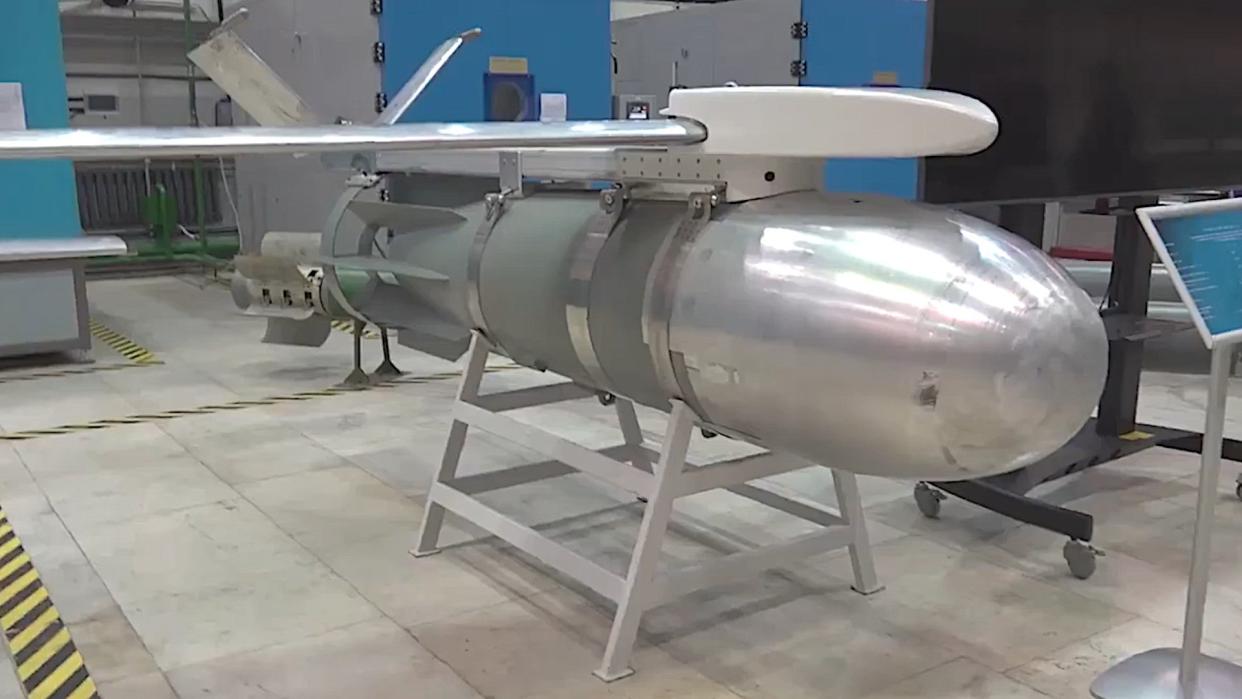
The Russian military has offered the first clear look at a new glide bomb conversion kit with pop-out wings for the massive 1,500-kilogram (3,300-pound) class FAB-1500 M54. This weapon is three times larger than the Russian bombs with pop-out wing kits that have already become a major issue for Ukrainian forces and that have prompted notable shifts in that country's air defense tactics. Wing kit-equipped FAB-1500 M54s offer a new and far more destructive stand-off strike option for many of Russia's tactical jets that also help pilots stay further away from enemy defenses.
The new views of wing kit-equipped FAB-1500 M54 general-purpose high-explosive bombs were included in a video, seen in the social media post below, that the Russian Ministry of Defense released a video earlier today. The footage is from a recent visit by Defense Minister Sergei Shoigu and other officials to the JSC Tactical Missiles Corporation.
JSC Tactical Missiles Corporation is the company responsible for making the wing kits, which are formally known as Unifitsirovannyi Modul Planirovaniya i Korrektsii (UMPK), translating to unified gliding and correction module. The corporation's production output has reportedly tripled since last year. You can read more about what is known about Russia's UMPK glide bomb kits and their development in this past War Zone feature.
The glide bomb conversion kit for the FAB-1500 M54 includes an assembly containing the pop-out wing, which is strapped around main body of the weapon. That assembly also extends all the way to the rear of the bomb and a v-shaped tail is attached to the end. The video from Russia's Ministry of Defense shows one wing kit-equipped FAB-1500 M54 glide bomb with a new rounded fairing that slips over the weapon's blunt nose. This will help with aerodynamics and will extend the range of the weapon.
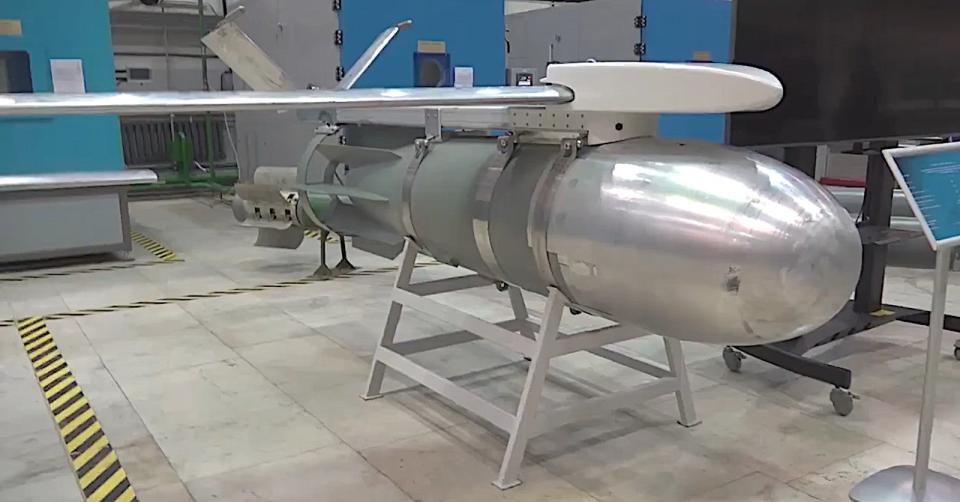

UMPK designs have at least some form of satellite navigation-enabled guidance, but just how accurate bombs with these kits are remains unclear.
The range of the wing kit-equipped FAB-1500 M54 is also unknown. Smaller 500-kilogram (1,100-pound) class bombs with UMPK kits are understood to be able to hit targets up to a few dozen miles away.
The video footage the Russian Ministry of Defense released today also shows testing of what may be an improved version of the UMPK kit for 500-kilogram-class general-purpose high-explosive FAB-500 M62. UMPK-equipped FAB-500 M62s that have been observed previously have a pair of additional vertical fins directly attached to the bomb's existing circular tail section. The example seen in the new clips has a v-shaped tail section that clamped around the rear of the bomb's body.
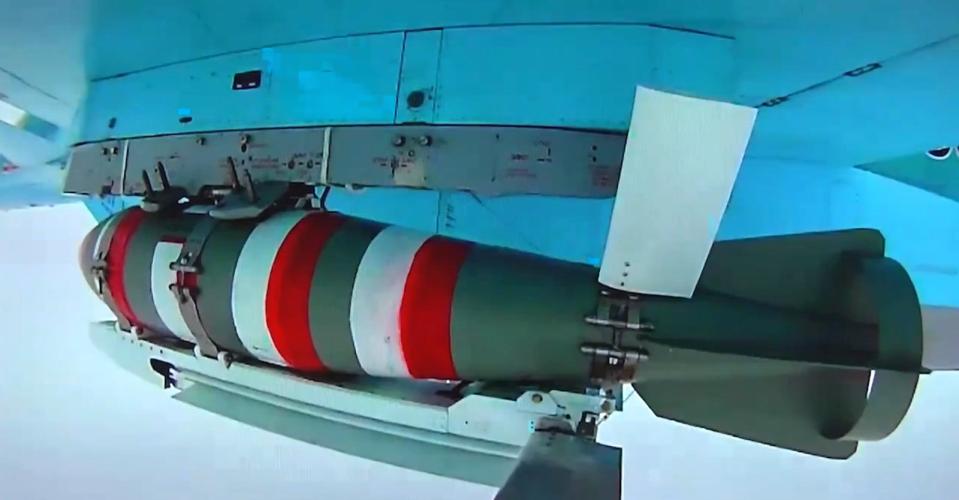
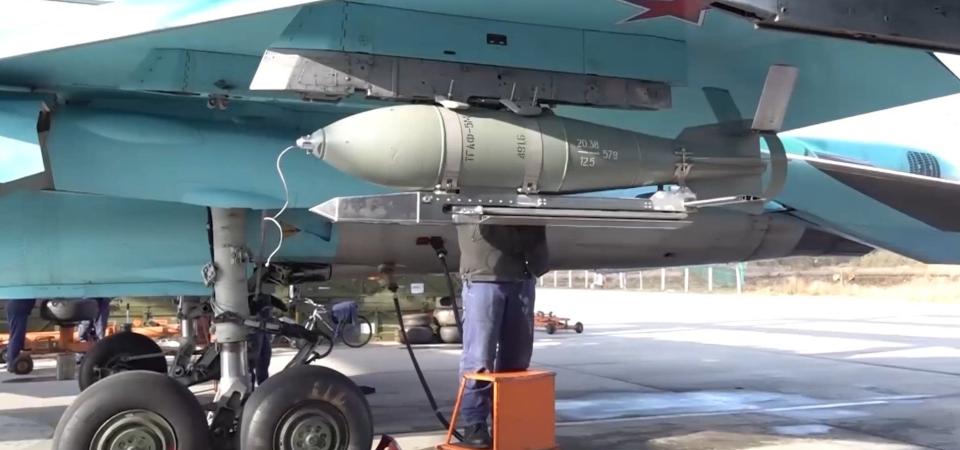
What appears to be a UMPK kit-equipped RBK-500 SPBE-D 500-kilogram class cluster bomb is also briefly seen in the new footage. The SPBE-D contains 15 'smart' anti-tank submunitions that are capable of searching for and zeroing in on their targets using built-in sensors. The weapon is similar in many respects to the U.S. Air Force's Sensor Fuzed Weapon (SFW). Russian forces have also observed employing other wing kit-equipped versions of the RBK-500 in Ukraine in recent months.
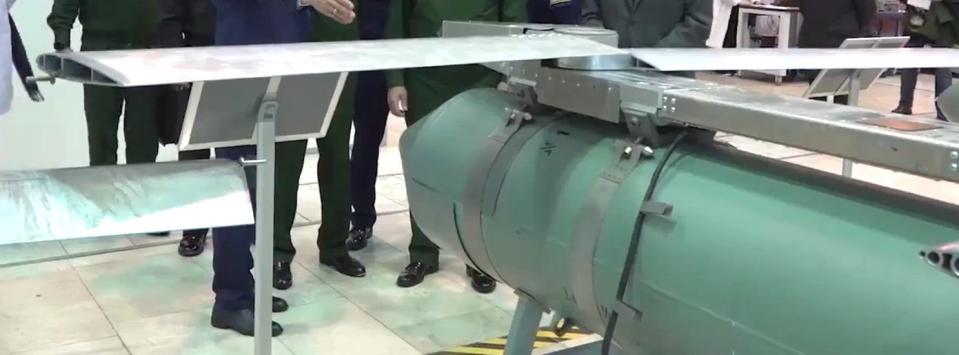
As far back as April 2023, there were reports that a version of the UMPK for the FAB-1500 M54 was under development. Last September, the Fighterbomber channel on Telegram, which has close ties to the Russian armed forces, claimed that wing kit-equipped FAB-1500 M54s were being used against targets in Ukraine.
Yesterday, a partially blurred-out picture of one of these bombs with a UMPK kit, loaded on a centerline pylon of an indeterminate combat jet, also emerged on Telegram. Russia's Su-34 Fullback combat jets, as well as Su-35 Flanker-E and Su-30SM Flanker fighters, could all potentially carry wing kit-equipped FAB-1500 M54 bombs on their centerline and certain wing stations.
As The War Zone has noted in the past, Russia has a limited air-launched stand-off precision-guided munitions arsenal, overall, so being able to convert dumb bombs into longer-range weapons with even rudimentary guidance is a boon. Even with minimal precision guidance capability, UMPK-equipped bombs have still clearly offered important benefits for Russian forces, especially in the face of more capable Ukrainian air defense assets.
Ukrainian officials themselves have publicly said that these weapons present serious threats. In the past few months, there has been a notable shift in Ukraine's air defense tactics. This has been clearly intended to disrupt Russian tactical aviation operations, especially along areas of the front lines, with a particular focus on stemming the use of UMPK kit-equipped glide bombs. The War Zone has been tracking these developments closely.
Altogether, heavyweight FAB-1500 M54 with wing kits could add a new dimension to all of this, especially if they can offer additional range and/or precision over previous types. UMPK-equipped FAB-1500 M54 already offers significantly greater destructive capability than the smaller FAB-500 M62-based types, which would make them useful against new target sets. It also offers a new way for Russian forces to more effectively employ the larger 1,500-kilogram-class weapons at all.
It's also interesting to note here that there is no direct U.S. military analog to the FAB-1500 M54. It is roughly 50 percent heavier than the largest of the three most common sizes of bombs (500, 1,000, and 2,000-pound classes) that American aircraft employ.
In recent weeks, there have been reports that Russia is trying to expand its air-launched stand-off strike capabilities in other ways, too, with a particular emphasis on new cluster munitions.
Last week, the government-run National Resistance Center of Ukraine claimed to have obtained documents showing Russian plans to reequip air-launched Kh-32 cruise missiles with cluster munition warheads. The Kh-32 is an improved version of the Kh-22, and both are primarily intended for anti-ship use. The standard Kh-32 has a high-explosive warhead and a reported maximum range of at least 550 miles. These missiles fly at supersonic speed and dive on their targets in the terminal phase of flight, making them hard to intercept.
Russia has employed Kh-22s and/or Kh-32s against targets on the ground in Ukraine on several occasions since May 2022, and they have shown to be very destructive if inaccurate. A cluster munition warhead for the Kh-22/Kh-32, if can be made to work, would make good sense and could help make up for limited accuracy.
Earlier this week, Russian state media reported that the PBK-500U Drel precision-guided cluster bomb is set to go into full-scale production this year, citing an unnamed individual from state-run defense conglomerate Rostec. Drel is said to contain 15 SPBE-series sensor-fuzed anti-tank submunitions (just like the RBK-500 SPBE-D) and to use a satellite navigation-assisted inertial navigation system guidance system. The bomb, at least as it has been shown in the past, has four large strake-like fins that reportedly give it the ability to glide up to 30 miles (50 kilometers) to its target.
It remains to be seen if the PBK-500U will indeed enter serial production, and possibly start seeing operational use, in 2024. The bomb was first publicly unveiled in 2016 and Russian authorities initially said they hoped it would enter service in 2018.

Cluster munitions, in general, offer valuable ways to uproot deeply dug-in enemy forces, as well as large concentrations of personnel and vehicles in open areas. Weapons of this type can also be employed to devastating effect against other kinds of open targets, including enemy airfields and air defense sites. Being able to use them from a stand-off distance only increases their flexibility and reduces the vulnerability of the launching platform.
Ukrainian forces have demonstrated this to a high degree with their use of U.S.-suppled cluster munition artillery shells and Army Tactical Missile System (ATACMS) short-range ballistic missiles with cluster munition warheads. The War Zone has explored these operational benefits of cluster munitions in detail in the context of the conflict in Ukraine in the past.
The news of new Russian air-launched stand-off munition developments comes as Russian forces have made some very modest gains in areas of the front lines in eastern and South Ukraine in recent weeks. Ukraine's armed forces are currently facing serious concerns about available personnel and worrisome uncertainty over future Western aid, especially from the United States.
Though the full extent of the impact of Russia's new wing kit-equipped FAB-1500 M54s and other new air-launched stand-off weapons is still to be seen, the introduction of far more destructive stand-off bombs can only present new challenges for Ukrainian forces.
Contact the author: [email protected]